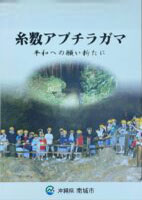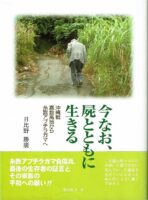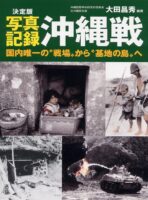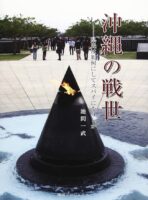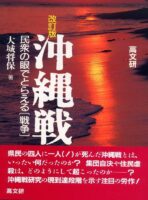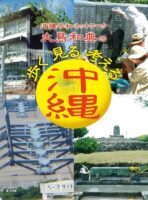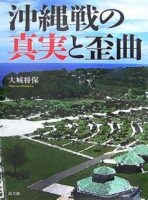Shigeku Chinen, Resident of Itokazu Area (Then Age 23)

I was Assigned to the Shikenbaru Special Attack Marine Base
On February 18th 1945, I was summoned by the draft card from the local public office of Tamagusukuson, and assigned to the 28th Battalion of the Gushikamison Minatogawa Marine Special Attack Base. I lived in a civilian's house near the Jin river of Tamagusukuson Shikenbaru. Before I was drafted, I used to work hard in the youth team of Itokazu. At the time, we were a family of 6: my parents, my wife, and my two children. In 1943, during the summer, I was forced to work on the runway construction for 10 days, living in a place without any available water. I worked at the runway for 10 days, living in a place without any available water. Around July 1944, the Take Unit came to Itokazu Village. Later on, when the Tama Unit was stationed in the village, work soldiers, and medics started staying in my house. I was attached to the headquarters of the 28th Battalion of the Special Attack Marine Base in Nagamo. Defense personnel from Gushikami, Sashiki, Chinen, Tamagusuku, Kochinda, all the villages of the eastern Shimari area were attached there. There were 8 men from Itokazu, all in the same company.
Moving the Suicide Boat
Until the US army landing in Chatan on April 1st, we dug a trench along the shoreline near Shikenbarujinga to put a boat on a taxiway of tied-together logs, leading out to the sea. We had to camouflage the boat with tree-leaves, and train in the open space, in front of the sugar refinery. In March, nearly 30 Boats attached under the Okutakejima Bridge to be checked as suicide boats, were destroyed and sunk by an air raid. However, fishermen, toiling every night, managed to lift 6 boats out of the water.
Later, we received orders to move the base, and 30 to 35 men shifted to carry a boat weighing over a ton, to hide it in a sugar cane field near Funakoshi. But that boat was also found and burnt by the enemy. After moving from Shikenbaru, we stayed a while in the Abuchiragama trench of Itokazu. Food was gathered there and we slept in the cave, on a rock from where we could see the sky outside.
Around April 29th, the marine boat suicide unit moved to Nohagawa of Tomigusukuson Takayasu. The weather was very hot, and inside the trench that was being dug along the forest, it was terribly wet and muggy. During the night of May 3rd, around 9:00, as 3 to 5 suicide attack boats were being loaded with boxlike explosive mines, under the Hishihiya bridge, a shell burst at point-blank range, killing about 30 men, including Major Honma. Many defense personnel were hurled down into the river. I was one of them. My thigh was injured.
Just as I Came out of the Trench, Fragments Went Through My Neck and My Left Arm
Around Mid-May, as units were going south from the Shuri front, I was still in the squad digging the trench in Noha forest. I had just come out of the trench when fragments of a bomb went through my neck, my left arm and Shigeo Toyama, who was in the same trench, had his leg injured too. Taijin Oshiro, who was trying to help us, got his face wounded the next day and lost one eye.
Since We Were Injured and Unable to Walk, We Were Abandoned
At the end of May, the marine suicide boat attack unit went south toward
Gushikami. Since the 3 of us were very badly injured and couldn't walk, we
were abandoned. But fortunately, the next day, Shigeo Toyama's father and men from Itokazu. I was carried on Kiyoteru Toyama's back and the 3 of us went back to Itokazu trench. The medical officer Yamada treated me once. Afterwards, we moved to the Umakeabu trench, where our families had taken refuge. Apart from our families, about 20 more villagers were gathered there.
I Became a Prisoner Because I Thought I’d Rather Die Outside in the Daylight
On June 6th, the US army came in front of the trench where we had taken refuge. The rumors said: "male prisoners will be run over and killed by tanks, and women will be tortured to death." However, we discussed whether it was a better fate dying outside in the daylight, even if we got shot by a US soldier, than suffering inside the dark trench. We decided to come out. When we came out, we saw US soldiers holding electric wires, and we thought that we would be tied up and shot. The first time they pointed their guns at us we were scared to death. My family was captured and taken to the open space before the Itokazu sugar refinery.
On our way there, we saw many dead Japanese soldiers and residents along the road. Their bodies were swollen and infested with flies, and the stench was terrible. When we gathered in the open space, a shell fell just nearby and some US soldiers made a gesture suggesting to lie face down. As we thought we were going to be killed anyway, nobody laid face down.
Later, US soldiers gave us portable rations. The soldiers showed us the rations were harmless by eating some themselves, and we finally decided to eat. From that moment, we felt gradually relieved, seeing that the US soldiers might not kill us.
My Camp Life Apart from My Family
We were taken to Oshiro, then to Sashikison Yabiku.
After I was inspected by the US army CIC, I was put in a wire fence enclosure. Because I was injured, they thought I was a leader, and they put me in a double wire enclosure.
I stayed there almost a week without any news from my family.
After the interrogation, I was sent to the Yaka prison camp.
My family spent a month in the Yabiku prison camp. Then they were forced to relocate.
But in Tima, there were very few rations and people had to feed themselves on vine and wormwood leaves to try and survive.
My daughter Katsuko, a 10 month-old baby, died of malnourishment and malarial fever.
When I came back from the Yaka prison camp to Funakoshi, my family was already there. We finally settled in Itokazu on December 10th 1945.





